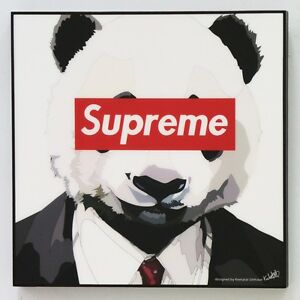
Supreme
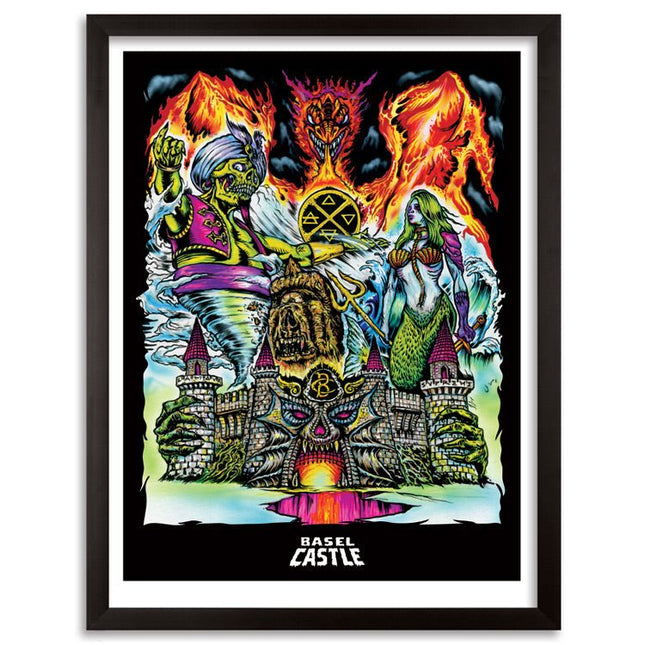
L'Amour Supreme Basel Castle 2013 Archival Print by L'Amour Supreme
Basel Castle 2013 Limited Edition Archival Pigment Prints on 310gsm Fine Art Paper by L'Amour Supreme Graffiti Street Artist Modern Pop Art. Basel Castle, produced by the Overthrow Collective in association with Embrace and ABV, is an art-centric festival combining some of the worlds most influential contemporary artists & musicians, with uniquely interactive games, installations, exhibitions, and live performances. "The name L'Amour Supreme came about from me being such a big fan of Coltrane and his album, A Love Supreme. Supposedly he had this spiritual awakening while recording it. Not in the traditional Christian or Islamic sense, but more of an overall revelation of the connectedness of all beings. I definitely feel that listening to his music and thats something I wanted people to feel when they view my art." - L'Amour Supreme
$209.00
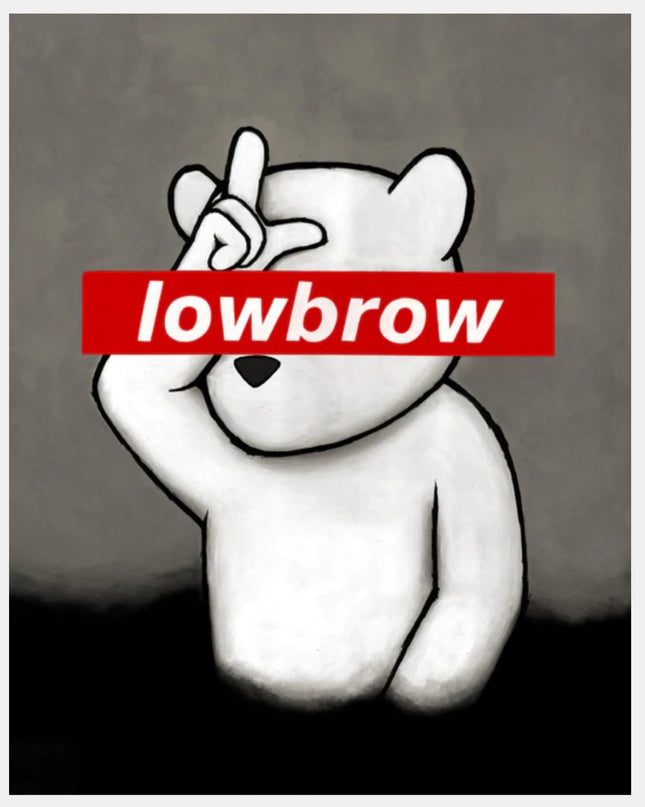
Luke Chueh Lowbrow And Still The Loser Giclee Print by Luke Chueh
Lowbrow- And Still The Loser Artwork Limited Edition Giclee Print on 290gsm Moab Entrada Paper by Modern Artist Luke Chueh. 2011 Signed & Numbered Limited Edition of 50 Artwork Size 18x24 "Lowbrow - And Still The Loser" by Luke Chueh is a distinctive piece within the pop art genre, where every day is imbued with layers of deeper meaning. This artwork, a giclee print on 290gsm Moab Entrada paper, holds its own in the discourse of street art and graffiti art through its evocative representation of common sentiments. Created in 2011, the piece was offered as a signed and numbered limited edition, with only 50 prints available, each measuring 18x24 inches, signifying its exclusivity and collectibility. The artwork features Chueh's trademark character, a bear, depicted in monochrome against a stark background. The figure's action is central to the artwork's narrative: a loser's salute, which, in the context of Chueh's oeuvre, could be interpreted as a commentary on self-acceptance in the face of defeat or societal judgment. The term "lowbrow" boldly interrupts the visual, acting as a self-referential nod to the lowbrow art movement and an ironic statement about the bear's self-deprecation. This print continues Luke Chueh's exploration of the juxtaposition between the innocence of cartoon characters and the complexity of human emotions, a theme prevalent in street art's storytelling. Chueh's work is often recognized for its emotional rawness, encapsulated within the accessible form of animated figures. "Lowbrow - And Still The Loser" is particularly resonant in its straightforwardness, reflecting the artist's capacity to communicate profound experiences through simple, relatable imagery. The choice of Moab Entrada paper, known for its archival quality, suggests a purposeful intention to preserve the depth of the black and white tones, ensuring that each collector receives a piece that remains true to the visual impact of the original artwork. The limited edition nature of this print elevates its value among collectors and enthusiasts, who view Chueh's work as a bridge between the often disparate worlds of pop art and street art. Here, the emotional language of graffiti, the visual punch of pop art, and the introspection of the lowbrow movement merge to form a statement piece that challenges viewers to find meaning in the guise of simplicity.
$863.00
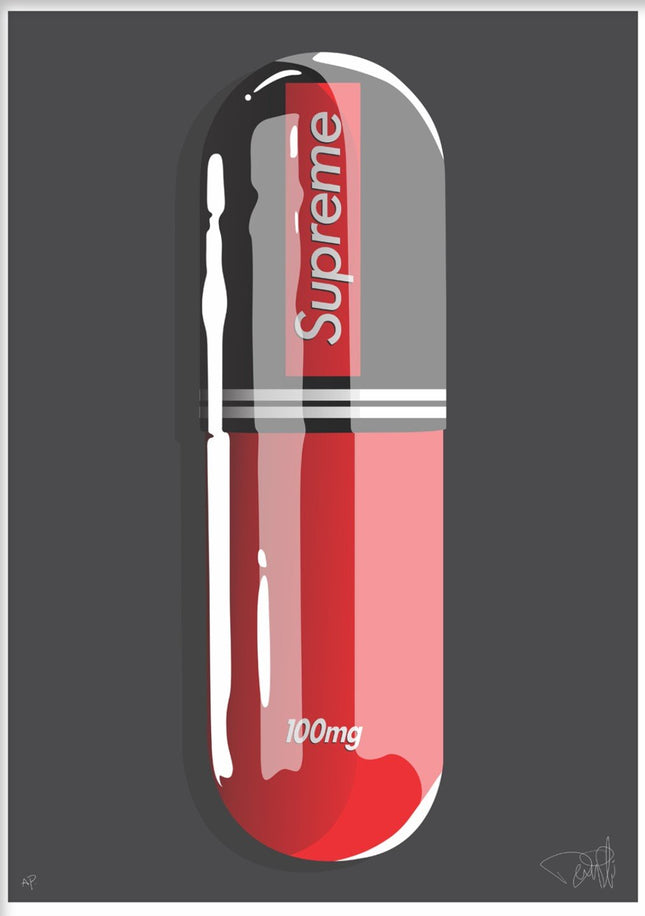
Denial- Daniel Bombardier Fashion Addict Refill Supreme AP Archival Print by Denial- Daniel Bombardier
Fashion Addict Refill- Supreme Limited Edition Archival Pigment Fine Art Print on 330gsm Canon Fine Art Paper by Legend Street Art and Modern Pop Culture Artist Denial. AP Artist Proof 2019 Signed Limited Edition of 100 Artwork Size 18x24 Supreme Designer Fashion Drug Pill. AP Artist Proof Numbered, Signed, Stamped on Reverse, Normal Edition of 100, 18x24, Archival Pigment Print on 330 GSM Canon Fine Art Paper. Essentially, Denial is satirizing the reality, which both he and us are experiencing, through some of the Western culture’s most emblematic symbols. Denial is utilizing cultural products with the intention to make a statement against the system, which gave birth to them. As a result, he re-contextualizes them and transforms them from commercial products to his cultural legacy.
$529.00
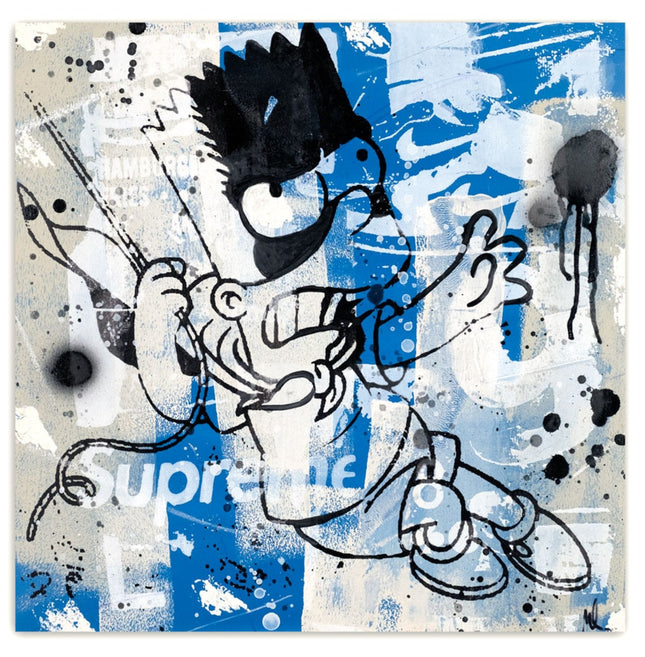
Marly Mcfly Relics of Youth II HPM Wood Stencil Print by Marly Mcfly
Relics of Youth- II Limited Edition Hand-Embellished HPM Stenciled Montana Gold Spray Paint and Acrylic on Wood Panel by Marly Mcfly Graffiti Street Artist Modern Pop Art. 2021 Signed Original Painting Artwork Size 18x18 Signed 2021 Montana Gold Spray Paint and Acrylic on Wood Panel Size: 18 x 18 x 2 Inches Release: November 01, 2021 Run of: 1
$613.00$521.00





